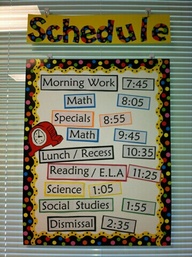Do you use a schedule of some sort? These past few years I’ve been keeping track of my life using iCal. Before this, my mom kept track of my life using a big fridge calendar complete with a sticker dedicated to every doctor’s appointment, every pro-d day, and every parent-teacher interview. In elementary school I used to have a standard-issue agenda, complete with our school motto on the front. Every day before I left from school my teacher would sign it, but only after I had carefully copied all my homework from the board. Eventually (but not soon enough in my opinion) I was expected to keep track of my homework with out my teacher or mom signing it an agenda book. At this point in my life, I was too cool for school. If something really was important, writing it on a note and putting it in my pocket was good enough! My standard issue agenda book sat at the bottom of my locker, unopened and unused for many years but my notes became a system of organization in their own. In my last few years of high school I was ultra trendy and carried a pocket sized Moleskine with me everywhere I went. I would pull it out of my purse and feel ultra sophisticated and grown up when I’d jot down all my very important commitments. One thing is for certain, keeping a schedule of some sort has always been important for me to keep track of what comes next. Our culture organizes itself around months, dates, days of the week and time. Imagine going to the movie theatre if you didn’t know what time or day of the week it was. Who knows what you’d see? Without days of the week would we lose track of time? Would this be the end of taco Tuesdays, or wing Wednesdays? How would you know if you’re getting older if you can’t tell it’s your birthday? When would we put up Christmas decorations? And then, when would we take them down? Without calendars, schedules and time there are too many unknowns. Our lives would descend in to anarchy. Learning about time, the days of the week, the months of the year and different formats of calendars are the most important cultural tools we need to teach children. Taking a few minutes at the start of the day to consult a calendar, talk about what day it is today, what day it was yesterday and what day it will be tomorrow is a great start to the day for a primary classroom.
The most important thing about keeping a schedule is that we know what to expect next. This can be applied to classroom activities too. Let’s take a look at a few pictures:
To maximize benefits, I would include little pictures of the activity, similar to the ones in the red chart.
In my opinion, being predictable is the best thing you can do for your students.
Keeping schedules, calendars, and other visual aids in your classroom that include pictures of the activity, and the time the activity will take place can help students
– who need extra time transitioning from one task to another (LD or ADD/ADHD)
– students with autism or Asperger’s syndrome
– students with anxiety
-students who are deaf or hard of hearing
– students who are english language learners


